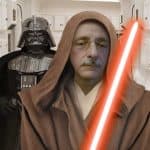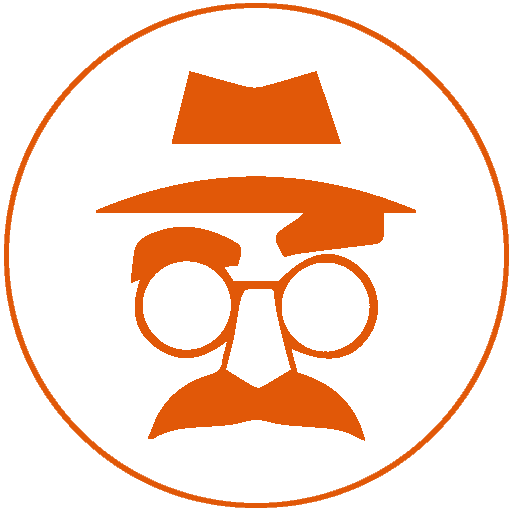This is a text automatically translated from Italian. If you appreciate our work and if you like reading it in your language, consider a donation to allow us to continue doing it and improving it.
The articles of Cassandra Crossing I'm under license CC BY-SA 4.0
Cassandra Crossing is a column created by Marco Calamari with the “nom de plume” of Cassandra, born in 2005.
Every Thursday, starting from September 9th, we will offer you an ancient prophecy of Cassandra, to be reread today to reflect on the future, alternating recent articles selected from the latest releases.
We offer you two words from Cassandra's dictionary: paedoterrosatanist And realterated. The first, however, despite being from 2010, reminds us not to lower our guard against the so-called Chat Control (here is a video if you understand English). The second, from 2016, concerns augmented reality and is useful to us in this period that we talk about a lot Half and of metaverse (although we, obviously, prefer the fediverse).
This article was written on February 26, 2010 from Cassandra
The Dictionary of Cassandra/Pedoterrosatanista
Is reality hidden by distorted and incorrect communication? Let's try to straighten it out with the same weapons.
pe-do-ter-ro-sa-ta-nis-ta: sm and f. (pl. m. -sti, f. -ste.)
1) neologism whose etymology is derived from the fusion of three terms: pedophile, terrorist And satanist.
2) deadline nonsense used to reveal incorrect dialectical methods in debates on the Internet and civil rights. This neologism was created to respond to the instrumental use of the three terms from which it is derived, usually done to the detriment of anyone who dialectically supports any form of freedom or civil right in Net.
In fact, it is common practice to accuse anyone who declares themselves in favour, or worse, considers privacy and civil rights to be values to be defended, particularly when applied to the Internet, of supporting or supporting one of the previous categories of criminals..
A rational analysis would immediately reveal the instrumentality of this type of contestation, but the emotional value of these three words usually breaks the rational process of a neutral listener, making it lean uncritically on the side of those who have used one of the three jokers, however perverse, instrumental or specious the thesis it supports may be. Mixing well-known terms in the same word, with a very strong negative emotional impact, but also completely different in meaning, has the aim of canceling the emotional charges, and promoting the maintenance of a rational process of understanding and judgment on the part of the listener.
The term paedoterrosatanist it must possibly be used anticipatorily in the development of the dialectical process, allowing to disarm the sudden contestation of flanking/aiding of one of the three original categories, usually kept aside like a load of eleven to be played at the right moment.
(Actually, if they play these games on talk shows, we can do them for good too.)
This article was written on August 23, 2016 from Cassandra
The Dictionary of Cassandra/ Realterata
What will happen to our reality, real, augmented and virtual, when technology has completed its development and is able to perfectly deceive our senses?
Re-al-te-ra-ta, sf (pl. you)
Who had the opportunity to do a chat with Cassandra he has already heard these extrapolations, or rather perhaps better "ruminations". However, he did not arrive at the final synthesis.
Effectively, if as suggested also in these pages he saw and meditated video by Keiichi Matsuda on augmented reality, he may have ventured into two very different directions of reasoning.
The first direction: the risks of an overly computerized society, in which a person is distracted by an "augmented reality" in which he ends up falling victim to common criminals (because they can no longer be classified as cyber-criminals), and suffers identity theft , performed with "dexterity", in defiance of biometrics and security. Very significant, but more can be done…
The second direction, less obvious but more important: that the augmented, or rather "altered", reality of one person will obviously be different from that of another, and that there is even no reason to consider one of the two more or less real. But moreover, in a world where many lived in altered realities, would it still make sense to talk about "reality"? One has to doubt it.
"But come on Cassandra - the 24 very in tune readers will say in chorus - don't make it long for a video in which a bit of computer graphics is simply superimposed on reality".
No, it's not just about tricking the eyes. In this case, to escape augmented reality and return to "normal" reality, it would be enough to close your eyes and grope around. It's not that simple, because the increasingly perfect and immersive interactive graphics overlay, even when seasoned with synthetic audio, which allows alterations of sounds and directions, provides an almost perfect sensation of immersion, in which however one cannot interact with the "material" world. Simply put, even with the best virtual or augmented reality, you always remain a "spectator".
I can see myself holding a rifle or opening a door by turning the handle, but the tactile sensations and proprioceptive they are totally absent. I will never be able to feel the weight and recoil of the BFG9000, or feel the yielding of the handle when pressed by my hand, much less the inertial effects of my movements and the position of my limbs. The only way to make up for the lack of the "tactile" part is to make people act on a real "stage" equipped with objects, even coarse ones, corresponding to the virtual scenario in which the participant is immersed.
In such a 10 meter stage there will be, for example, a wooden chair and a chipboard pedestal with a plastic crown on top. What a constraint, however, having to have a particular stage, even if made of chipboard, for each virtual or augmented reality scenario.
What about its size and complexity?
That the participant will instead see an immense throne room, with the two seats of the king and queen, and with three pedestals of oak, mahogany and olive tree with three crowns of silver, gold and diamonds on top, surrounded by magical and pulsating auras. touch and the inner ear will therefore not be deceived, but will complete the immersion in virtual reality, and the participant will be free to crown himself, taking the golden crown from the right pedestal and sitting on the throne he prefers. Then the braziers will burn brighter, the door of the hall will open and the royal guards, with leopards on their chains, will enter. Nothing can be done yet about the smell of fairgrounds and burnt wood, but sooner or later...
Well, this is where the techniques of "redirected walking" (diversion of the path) and other similar ones that will come, come to "help", further altering the little "material" reality just introduced. Yes, because the stage may be very different from what is perceived. It could be smaller, the pedestals will not be three but only one, and the single throne can be doubled, one for the king and one for the queen.
How is it possible?
Simply by providing subtly altered views of the scenario depending on what the participant is doing and how he is moving. If he looks at the golden crown, for example, his path will be imperceptibly deviated from the initial direction towards the only existing pedestal, altering the visual response of the scenario. A scenario of about twenty meters could become an infinite universe, as you know well if you got lost in a forest or a desert going in circles due to lack of reference points.
In fact, if the reference points "cheat", the physical stage can expand infinitely, "transform" in a thousand different ways, and even be inhabited by multiple participants at the same time. Here, despite the introduction of a dose of "real" reality into our "altered" reality, the possibilities of alteration do not decrease, but actually increase. It seems that when more senses come into play not only does the "realism" of the scenario increase, but much more they increase the possibilities of mental manipulation that the participant can undergo.
And so the girl shopping with her cart in a new “augmented supermarket” might be diverted to the warehouse in the back, and there have a space opera virtual reality experience for a while, and then be physically and visually reported in the normal (albeit "increased") aisle of the supermarket and therefore on the street.
What will we call this reality that is not "virtual", not "augmented" but "altered" in an increasingly total, imperceptible and convincing way? Not to steal the trade from Jaron Lanier the inventor of the term "virtual reality", but Cassandra could summarize these mind manipulation techniques by coining, starting from the cold "altered reality" which says it all but does not fascinate, a neologism which could be, precisely, "Realtered".
Marco Calamari

Video column “A chat with Cassandra”
Cassandra's Slog (Static Blog).
Cassandra's archive: school, training and thought
Join communities
If you have found errors in the article you can report them by clicking here, Thank you!







